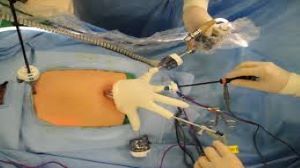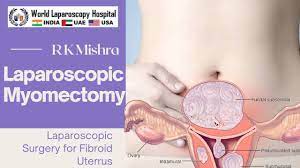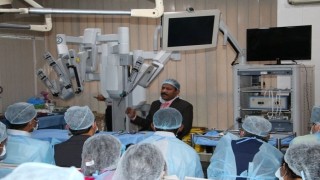Uterine Manipulators: Understanding the Importance of this Essential Surgical Tool
Add to
Share
2,705 views
Report
2 years ago
Description
Uterine manipulators are essential surgical tools used during gynecological procedures, such as hysterectomy or myomectomy, to manipulate and move the uterus. These devices are designed to facilitate visualization and access to the uterus, while minimizing tissue trauma and increasing surgical precision. Uterine manipulators come in different types and designs, including balloon, ring, and tenaculum-based manipulators. Each type has its own unique features and advantages, depending on the specific surgical procedure being performed. Balloon-based manipulators use a balloon filled with saline to hold the uterus in place and provide a clear view of the surgical site. Ring-based manipulators, on the other hand, use a rigid ring that is placed around the cervix to hold the uterus in place. Tenaculum-based manipulators use a clamp-like instrument called a tenaculum to grasp the cervix and hold the uterus in position. Uterine manipulators have several benefits in gynecological surgery. They provide increased visibility and access to the uterus, allowing for more precise and efficient surgical procedures. They also reduce the risk of tissue trauma and blood loss, which can result in faster recovery times and better outcomes for patients. Despite their benefits, the use of uterine manipulators is not without risks. Improper use or positioning of the manipulator can cause injury to the uterus or surrounding tissues, and may lead to complications such as bleeding or infection. It is important for surgeons to receive proper training and to follow established guidelines for the use of uterine manipulators. In conclusion, uterine manipulators are essential tools in gynecological surgery that offer several advantages, including improved visibility and access to the uterus and decreased tissue trauma. Surgeons must be well-versed in the proper use and handling of these devices to ensure patient safety and optimal surgical outcomes. Uterine manipulators are versatile tools that can be used in a variety of gynecological procedures, including laparoscopic and robotic-assisted surgeries. They are particularly useful in minimally invasive procedures, where access to the surgical site is limited. Uterine manipulators also play a critical role in fertility treatments, such as in vitro fertilization (IVF). During an IVF procedure, a uterine manipulator can be used to position the uterus for optimal embryo placement, increasing the chances of a successful pregnancy. In addition to their benefits during surgery, uterine manipulators can also be used to diagnose certain gynecological conditions, such as uterine prolapse or cervical cancer. By manipulating the uterus and cervix, a healthcare provider can better visualize and assess any abnormalities or irregularities. Overall, uterine manipulators are an essential tool in gynecological surgery and have revolutionized the way surgical procedures are performed. They offer several advantages, including improved visibility and access to the surgical site, decreased tissue trauma, and faster recovery times. As with any surgical tool, proper training and guidelines for use are crucial to ensuring patient safety and optimal outcomes. Uterine manipulators are also beneficial in cases where the uterus is enlarged or displaced, making it difficult to access during surgery. The manipulator can be used to move the uterus into a more accessible position, allowing for safer and more efficient surgery. Moreover, uterine manipulators can be used to perform endometrial biopsies or hysteroscopies. These diagnostic procedures involve the collection of tissue samples from the inner lining of the uterus and can help diagnose conditions such as abnormal bleeding, uterine fibroids, or endometrial cancer. In recent years, there have been advancements in the design and technology of uterine manipulators, with the introduction of new materials and features that enhance their safety and effectiveness. For example, some newer models of uterine manipulators include features such as single-use, disposable balloons, and adjustable ring sizes to accommodate different patient anatomies. In summary, uterine manipulators are an essential surgical tool in gynecological procedures, offering numerous advantages such as improved visibility, decreased tissue trauma, and increased surgical precision. They have been crucial in advancing minimally invasive surgical techniques and have the potential to improve patient outcomes and recovery times. However, it is essential for healthcare providers to receive proper training and to follow established guidelines to ensure the safe and effective use of uterine manipulators in surgery.
Similar Videos






